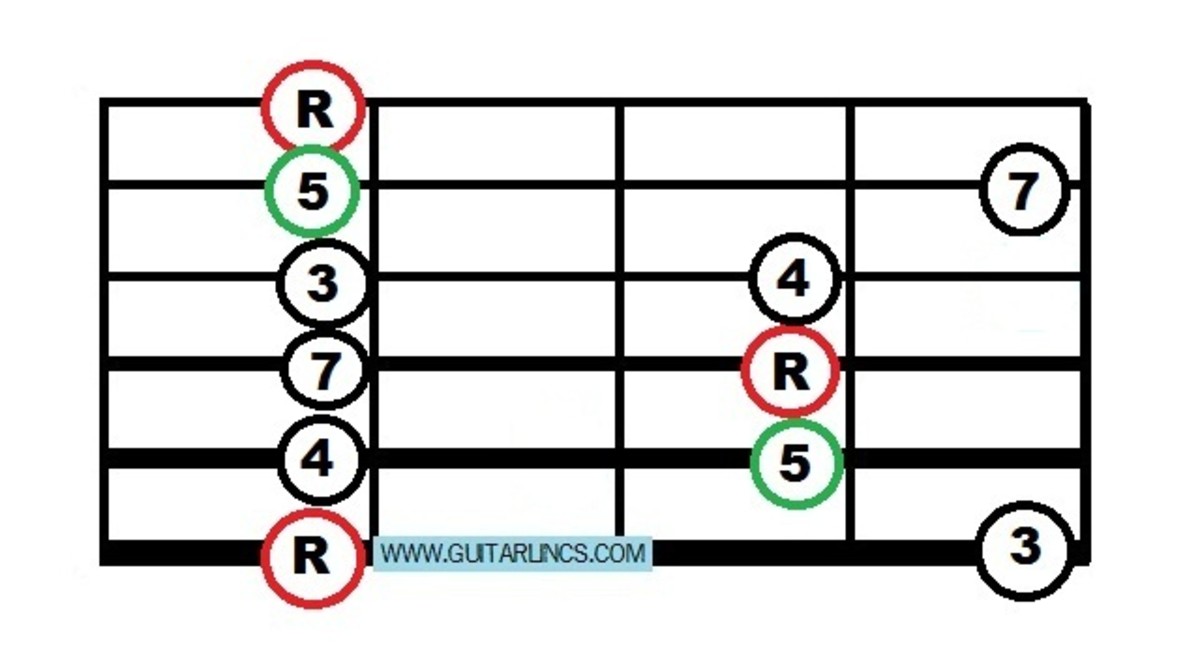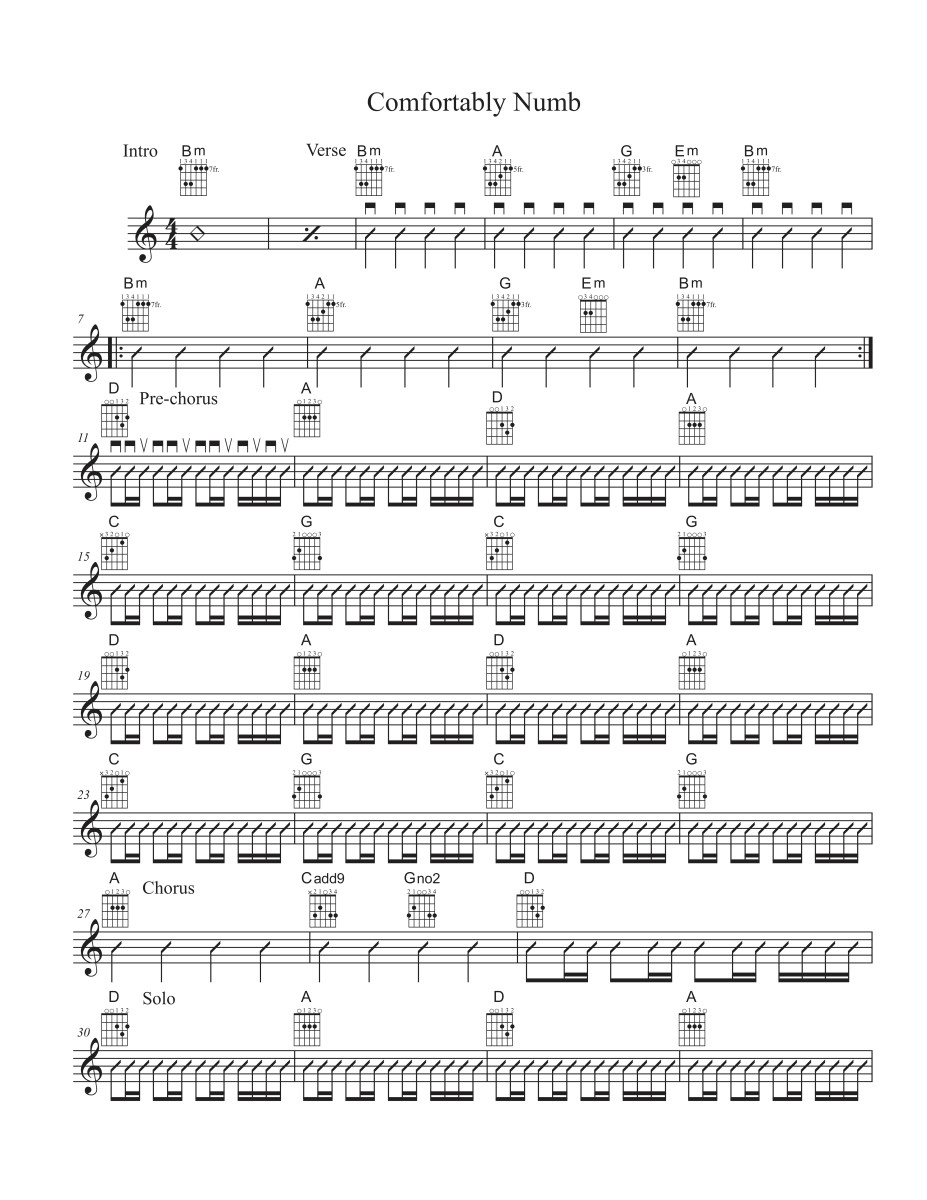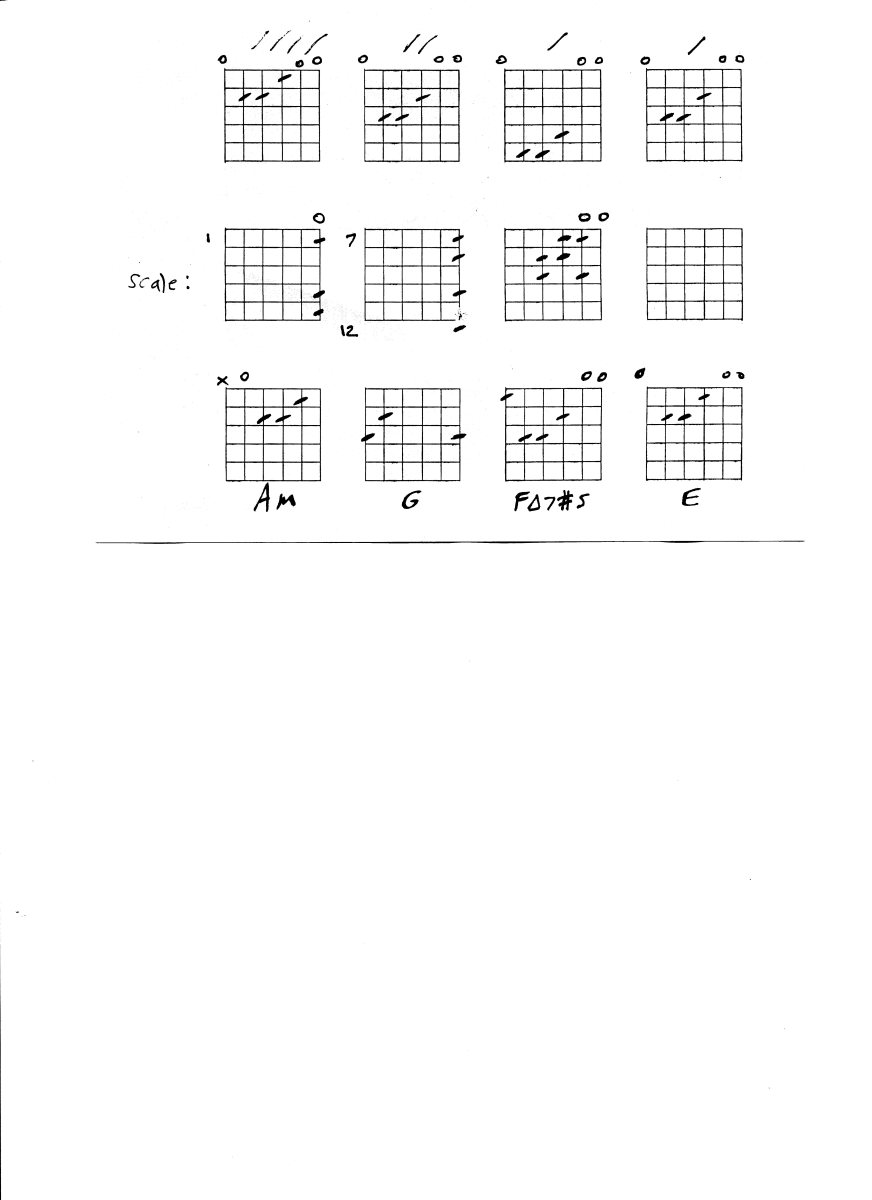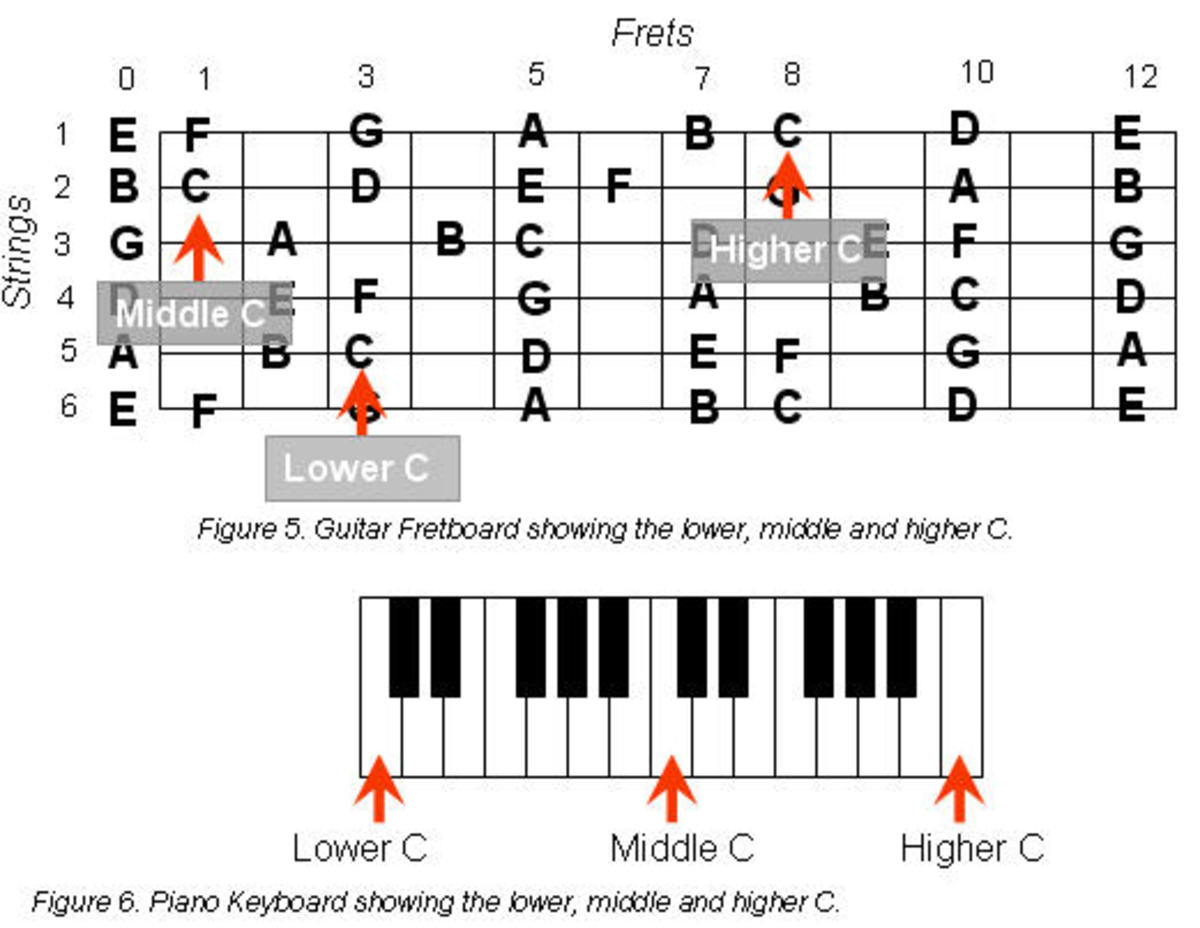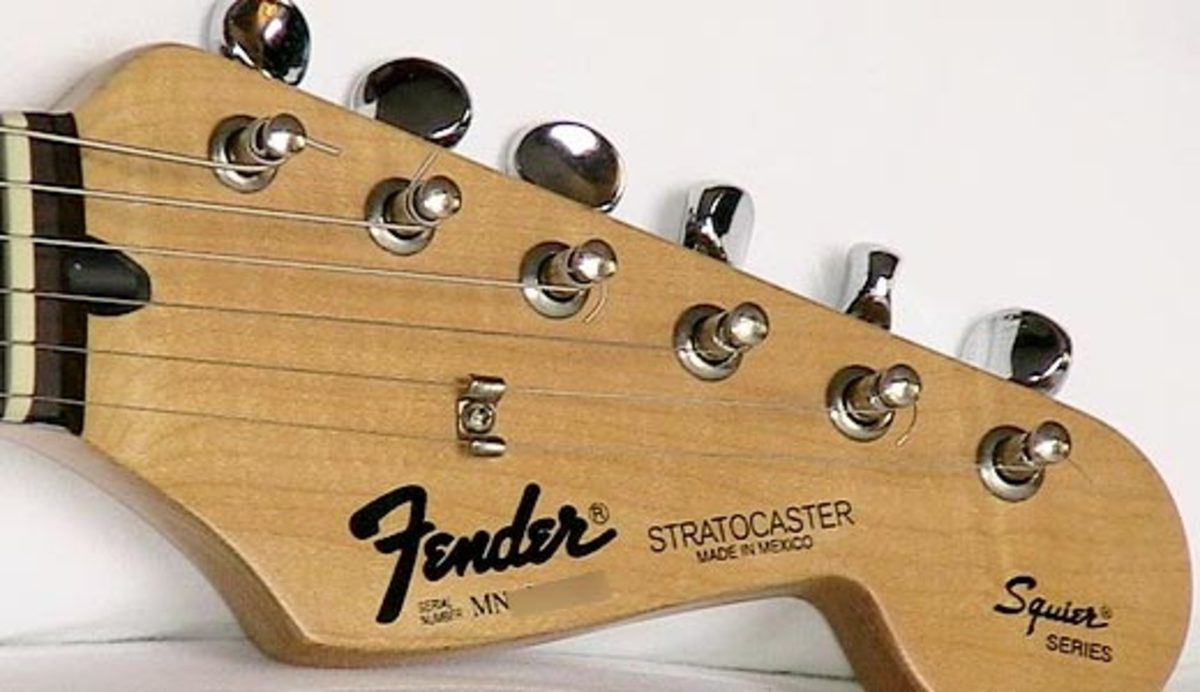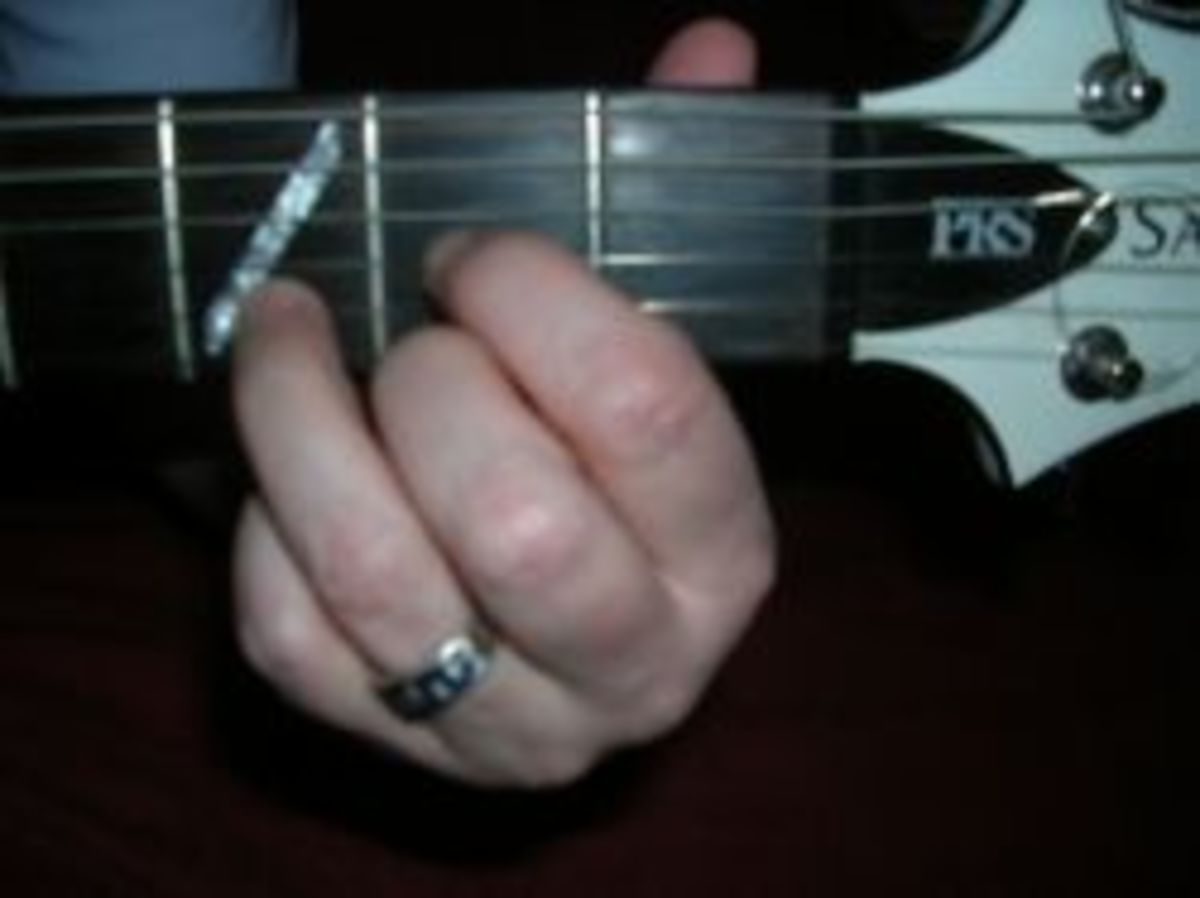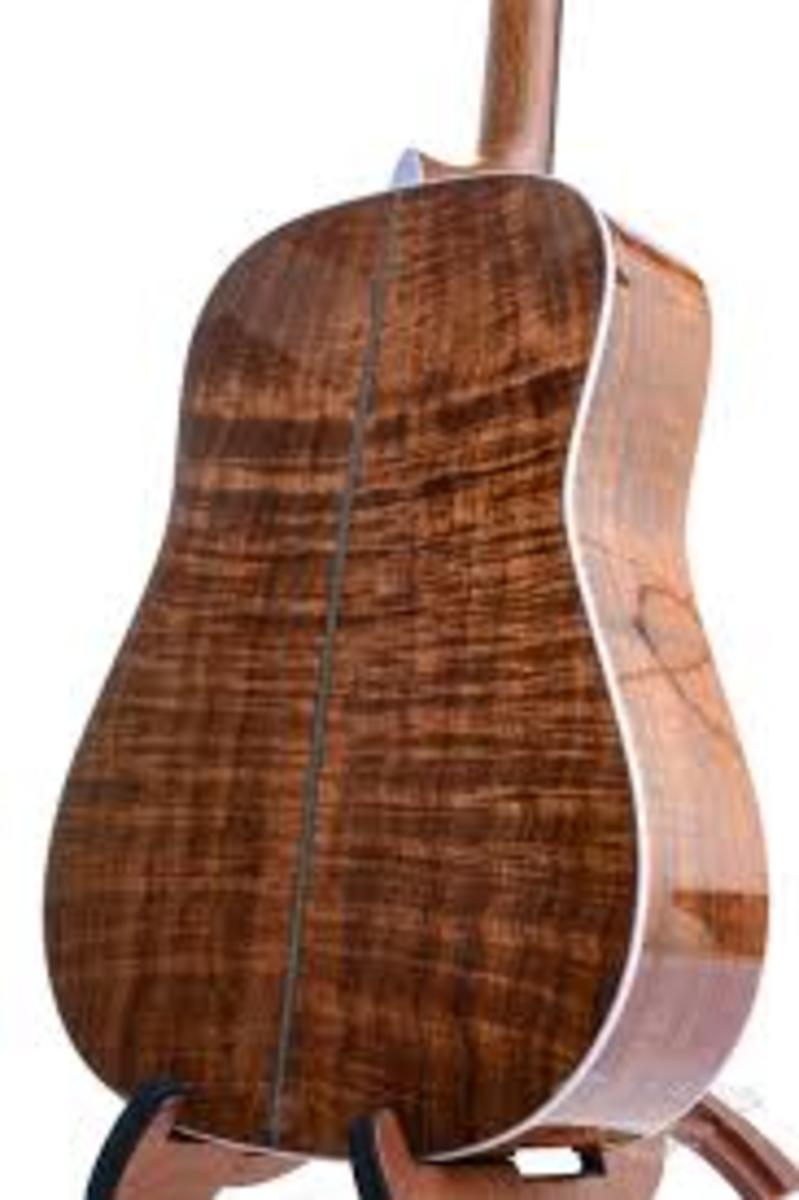Deacon Martin's Guide to Understanding Music (for Guitar) / Part 3
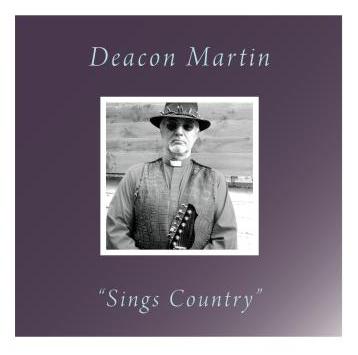
Jammin' in C
Now here's the breakthrough you've been waiting for. If you're playing with some one else in the key of C, you can get away with playing any of the yellow notes in the chord necks, in whatever random order you choose to play them, and sound more or less okay.
Yes, you are jamming, and your associate might never even know that you haven’t a clue about what's going on!
Depending on how long you try to get away with it, sooner or later you (and probably your associate) will notice that some of these notes sound better in some situations than others. This is where it gets a bit complicated as the mysteries of mathematics, physics, industrial production lines, and evolving human tastes in sound converge to create the mysterious stew of auditory experience we know as “music”.
To improve your credibility - and your chances of getting away with it for longer - look again at the chord necks. All those yellow notes in the chord necks – G, C, E, F, A, B, D - are in the C scale; in the key of C. Now if you go back to the first neck you will see a line of green squares at the 5th fret. This is what I call the “reference bar” - the fret from which you can explore the rest of the C scale without immediately losing your way.
The reference bar and the associated yellow notes on the next 3 frets are enclosed in a box. This is a sort of “safe zone”. You can noodle around in here while your pal plays the chords in the key of C. Awkward moments might arise as you hit the olive green notes because, although they aren't proper sharps or flats, they are still half tones and can be pesky.
The more noodling you do, the more aware of the pitfalls you will become, but, in essence, congratulations, you have just unlocked another primary musical secret of the western world.
Jammin' elsewhere
Suppose your pal is a muso and suggests playing in the key of D. This is where the other charts come in. In Figure 2 below, you will see a suspiciously familiar set up. The layout is identical to Figure 1 but the coloured notes have moved about. This is because we are now looking at the key of D. The same principles apply as for C. Noodle around in the safe zone box around the green reference bar, remembering to watch out for the olive half tones.
Key of D
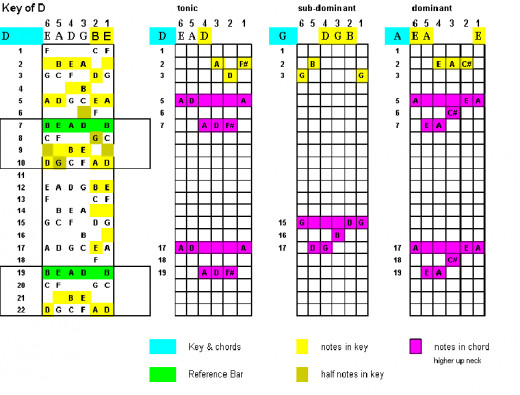
Remember, in the key of D (DEFGABC) the first note is D, the fourth is G, and the fifth is A. So the preferred chords are D, G, and A. The three necks to the right show you the standard fingerings for those chords. Give them a strum or two just to check them out.
You'll notice that those necks also include some purple colourings. These are the same chords, but played further down the neck and sounding slightly different. They are called “bar chords” because you place your index finger right across the fret board, “barring” the neck where the solid line of purple is. You then use your other fingers to fret those other purple squares. I know, it's not easy. Doesn't come naturally, but bar chords are a terrific short cut for those of us who have no intention of becoming virtuosos so, please, believe me, persist.
Bar chords show you very graphically how, down the length of the neck, everything - notes, scales, chords - repeats itself. As you reach the end of one 12 note scale, the next one starts. Each scale is called an “octave”, so you can play your notes, scales, and chords in higher or lower octaves.
The other big advantage to bar chords is that you can vary the sound of your rhythm playing by slightly lifting your fingers and “deadening” the strings. If you alternate between pressing hard and deadening as you strum, you begin to sound like a pretty funky and proficient rhythm player. It also makes it harder for other people to tell whether you are muffing your chords unintentionally or intentionally.
If you have a particularly good pal to whom you are unafraid to reveal the true extent of your musical muppetry, get him/her to noodle while you play funky bar chords - and then swap in mid-play. On the count of eight or twelve or whatever, you switch to noodling while s/he switches to bar chording. I'm telling you, you'll blow the minds of any observing date potentials.
One More Key
In Figure 3 below you'll see the same layout as for C and D, but with the usual changed smatterings of coloured notes. All the same rules and logic apply as for C and D, with a different emphasis in terms of pitch and characteristic notes and harmonic sounds.
Key of G
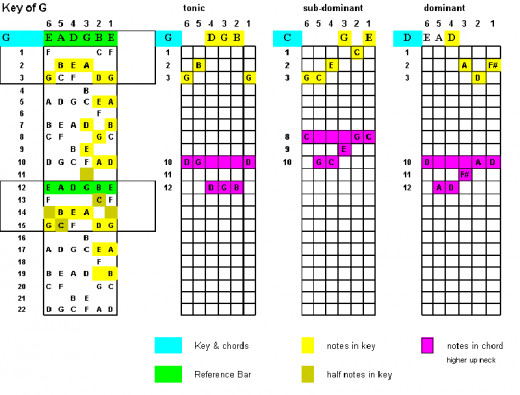
You'll notice the same opportunity for bar chords at the purple squares. These are to be exploited to the full as explained above.
You'll also notice, on the first neck, that the initial green “reference bar” is actually above the first fret. This means you can do a lot of noodling without even having to fret a string. And it's a great opportunity to practice “lifting off” and “hammering on”. These are little delayed action variations on fretting a note. Normally you try to get your finger tip on to a note in good time to fit in with whatever's going down around you, but if you delay for a millisecond and then hammer on with your finger tip, you'll find an exciting little variation that sounds knowledgeable and cool. Likewise if you delay a millisecond when you lift your finger tip off, you'll get a similar effect.
We're jammin' we're jammin' we're jammin' we're jammin'
Jammin in de name of de lord.....

